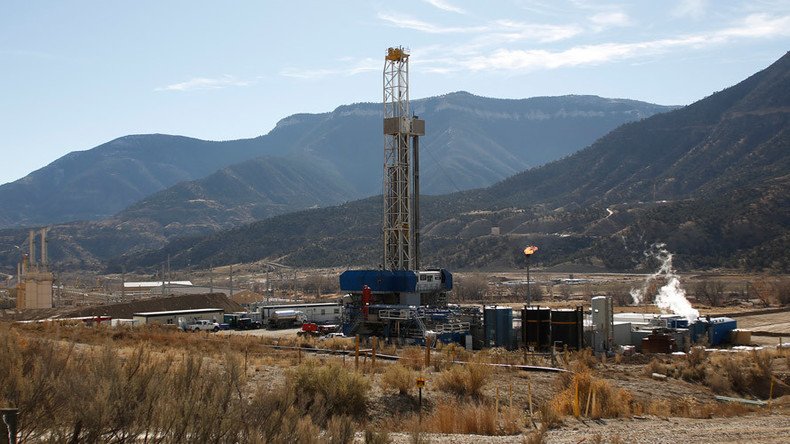Man-made earthquakes, often associated with controversial oil exploration operations such as hydraulic fracturing (fracking), have put 7 million people Americans at risk, according to a new report from the US Geological Survey.
On Monday, for the first time ever, the USGS released maps indicating which parts of the country are most at risk of damaging earthquakes, both natural and man-made. The map showed that states like Oklahoma, Kansas, Texas, Colorado, New Mexico and Arkansas are most vulnerable to dangerous man-made tremors.
Naturally occurring earthquakes are most likely to strike California and parts of western Nevada.

Some 7 million people live in areas at risk of man-made earthquakes, according to the USGS. Previous maps didn’t account for tremors induced by human activity, but the latest report presumes that more will occur going forward.
"By including human-induced events, our assessment of earthquake hazards has significantly increased in parts of the US," Mark Petersen, chief of the USGS National Seismic Hazard Mapping Project, said in a statement. "This research also shows that much more of the nation faces a significant chance of having damaging earthquakes over the next year, whether natural or human-induced."
Concern over earthquakes caused by humans has increased since fracking became more widespread. The process involves shooting a highly pressurized combination of water, sand and chemicals into layers of rock in order to free up gas buried in the ground. However, the leftover wastewater is then deposited into underground wells, which can sit near or on fault lines that can increase the risk of earthquakes.
The new report is meant for government officials “to make more informed decisions as well as emergency response personnel to assess vulnerability and provide safety information to those who are in potential danger,” the USGS said. “Engineers can use this product to evaluate earthquake safety of buildings, bridges, pipelines and other important structures.”
The central part of the US has seen a significant increase in earthquakes measuring magnitude 3.0 or greater on the Richter scale. Between 1973 and 2008, only about 24 earthquakes reached this level every year. Yet over the last six years, the number spiked sharply, up to an average of 318 a year. Last year alone saw 1,010 quakes.
A spokesperson for an energy industry association noted that most fracking sites have not been linked to earthquakes.
“The vast majority of injection wells are not associated with earthquakes, a fact that’s confirmed by the US Geological Survey’s report," Katie Brown, a spokesperson for Energy In Depth, a program of the Independent Petroleum Association of America, told USA Today.
"Data from the USGS and peer-reviewed studies show that less than one percent of injection wells across the United States have been even potentially linked to small earthquakes," Brown added. "This is a complex issue, and most earthquakes are not induced. But this is also an issue that scientists say — with near uniformity — can be effectively managed.”
As officials continue to look into the potential environmental consequences of fracking, businesses looking to exploit the new energy boom have increasingly found themselves falling behind financially or declaring bankruptcy. While fracking allowed many businesses in the US to take advantage of a new way to extract oil, the surge in supply around the world – combined with decreased demand and plummeting oil prices – has left many scrambling for survival.
In 2015, 42 oil and gas companies failed, according to the Washington Post, which cited a Dallas-based law firm called Haynes and Boone. This year, the number is expected to be even higher.
Small oil companies chose to take on millions in debt in order to develop more fracking sites, believing that any downturn in the market would be tolerable. One company, Swift Energy, amassed a debt of more than $1.3 billion before declaring bankruptcy and laying off its staff.
“By the time this is over,” said Terry Swift, who owned the company, “this might be the worst of all the busts.”

